*NURSING > EXAM > Module 1 Coding Worksheet HIM1126C ICD 10 PCS coding Rasmussen College ,100% CORRECT (All)
Module 1 Coding Worksheet HIM1126C ICD 10 PCS coding Rasmussen College ,100% CORRECT
Document Content and Description Below
Module 1 Coding Worksheet HIM1126C ICD 10 PCS coding Rasmussen College Samantha Facey 1. Refer to the 0HH table in your code book. Which of the following is an invalid PCS code? a. 0HHPXYZ b. 0HHT... 71Z c. 0HHT0ZZ d. 0HHW3NZ 2. Which approach value is selected for an exploratory laparotomy? a. 0- open b. 3- percutaneous c. 4- percutaneous endoscopic d. 8- via natural or artificial opening endoscopic 3. Which approach value is selected for a laparoscopic appendectomy? a. 0- open b. 3- percutaneous c. 4- percutaneous endoscopic d. 8- via natural or artificial opening endoscopic 4. Which coding guideline describes the body part values for bypass procedures? a. B3.4a b. B3.6a c. B3.7 d. B3.11a 5. A patient had carpal tunnel surgery cutting through the transverse carpal ligament releasing the median nerve. Which coding guidelines describes the body part values for release procedures? a. B3.13 b. B3.14 c. B4.2 d. B4.1a 6. A patient had carpal tunnel surgery cutting through the transverse carpal ligament releasing the median nerve. Which body part value should be chosen when building this code? a. carpal ligament b. median nerve c. wrist d. upper arm 7. Which coding guideline gives examples for the use of the external approach? a. B4.1a b. B4.6 c. B5.3a d. B6.2 8. What is the root operation for a cosmetic facelift? a. resection b. alteration c. creation d. revision 9. What is the root operation for a total lobectomy of one lobe of the lung? a. resection b. alteration c. excision d. removal 10. What is the root operation for a diagnostic bronchoscopy (no specimen taken)? a. inspection b. alteration c. drainage d. revision 11. What is the root operation for vein stripping? a. resection b. alteration c. removal d. extraction 12. What is the root operation for vasectomy for sterilization? a. resection b. restriction c. occlusion d. excision 13. Using the coding table below, choose the correct code for a Bronchoscopy. (Be sure you know how a Bronchoscopy is done and what body part is involved.) ☐ 0BJ14ZZ. ☒ 0BJ08ZZ ☐ 0BJ04ZZ ☐ 0BJ07ZZ 0 Medical and Surgical B Respiratory System J Inspection Body Part Character 4 Approach Character 5 Device Character 6 Qualifier Character 7 0 Tracheobronchial Tree 1 Trachea K Lung, Right L Lung, Left Q Pleura T Diaphragm 0 Open 3 Percutaneous 4 Percutaneous Endoscopic 7 Via Natural or Artificial Opening 8 Via Natural or Artificial Opening, Endoscopic X External Z No device Z No Qualifier 14. Using the coding table below, choose the correct code for Mediastinoscopy. (Be sure you know what this procedure is and what body part is involved.) ☒0WJCXZZ ☐ 0WJC4ZZ ☐ 0WJQ7ZZ ☐ 0WJ80ZZ 0 Medical and Surgical W Anatomical Regions, General J Inspection Body Part Character 4 Approach Character 5 Device Character 6 Qualifier Character 7 0 Head 2 Face 3 Oral Cavity and Throat 4 Upper Jaw 5 Lower Jaw 6 Neck 0 Open 3 Percutaneous 4 Percutaneous Endoscopic X External Z No device Z No Qualifier 8 Chest Wall F Abdominal Wall K Upper Back L Lower Back M Perineum, Male N Perineum, Female 1 9 B C D G H J Cranial Cavity Pleural Cavity, Right Pleural Cavity, Left Mediastinum Pericardial Cavity Peritoneal Cavity Retroperitoneum Pelvic Cavity 0 3 4 Open Percutaneous Percutaneous Endoscopic Z No device Z No Qualifier P Gastrointestinal Tract Q Respiratory Tract R Genitourinary Tract 0 Open 3 Percutaneous 4 Percutaneous Endoscopic 7 Via Natural or Artificial Opening 8 Via Natural or Artificial Opening, Endoscopic Z No device Z No Qualifier Code the following procedure statements using ICD 10 PCS codes. One code is required for each statement. Each correct code is worth one point. 15. Laryngoscopy with removal of polyps on the left vocal cord 0CBV8ZZ 16. Laparoscopic cholecystectomy (entire gallbladder removed) 0FT44ZZ 17. A patient with undescended testes has an open bilateral orchiopexy 0VSC0ZZ 18. Percutaneous control of bleeding at operative site after a procedure done on the right lower arm _0X3G3ZZ 19. Repair of sclera, right eye 08Q7XZZ 20. Open reduction with internal fixation, fracture of right humeral shaft 0PSC04Z 21. Partial glossectomy, external approach 0CB7XZZ 22. Extracorporeal shockwave lithotripsy of a stone in the bladder neck 0TFCXZZ 23. Esophagoscopy 0DJ08ZZ 24. Laparoscopic adhesiolysis to release jejunal adhesions 0DNA4ZZ 25. A patient with painful varicose veins in the lower leg underwent percutaneous vein stripping 06DY4ZZ Code the following 3 case studies using ICD 10 PCS codes. Case studies are worth 5 points each, regardless of the number of codes required. Hints and tips are in parenthesis. Case study #1 PROCEDURE: Colonoscopy INDICATION FOR PROCEDURE: Evaluation (diagnostic) of a patient with a history of colon polyps. PREOPERATIVE DIAGNOSIS: Patient with a history of colon polyps. POSTOPERATIVE DIAGNOSIS: A large polyp was found in the ileocecal valve. The polyp was removed and sent to pathology for a biopsy. Pathology results are pending at the time of this dictation. PROCEDURE NOTE: After informed consent was obtained, the risks and benefits of the procedure were explained to the patient. The patient was placed in a left lateral decubitus position. The colonoscope (endoscope used for the colon) was passed to the cecum with adequate visualization. The cecum appeared normal. On the ileocecal valve, there was found a 1.5 cm polyp that was removed by polypectomy by hot snare and submitted to pathology for biopsy. The remainder of the ascending colon appeared to be normal as were the transverse, descending, and sigmoid colon. The rectum has internal hemorrhoids that were left intact. The colonoscope was withdrawn and the patient tolerated the procedure with no complications. The code for this procedure is: 0DBC8ZX , 0DJD8ZZ Case study #2 PROCEDURE: Laparoscopic adhesiolysis (Think about what the objective of this procedure is to determine the root operation .) INDICATION FOR PROCEDURE: Previous pelvic surgery and personal history of ovarian cysts PREOPERATIVE DIAGNOSIS: Pelvic pain and a history of previous pelvic surgery and ovarian cysts. POSTOPERATIVE DIAGNOSIS: Adhesions due to prior surgery of the greater omentum to the anterior abdominal wall. No ovarian cysts were found. PROCEDURE NOTE: A supraumbilical incision (small incision as this is laparoscopic) was made with a scalpel and elevated up with towel clamps. A long Veress needle was placed and CO2 gas was used to insufflate the abdomen and pelvis. A 10-12 trocar and sleeve were then placed and confirmed via the laparoscope. The dense greater omental adhesions to the anterior abdominal wall were noted immediately. At that time, we were not able to see into the pelvic region. A second 5mm trocar and sleeve were placed in the left mid quadrant under direct visualization. The ligature device was then placed developing a plane between the omentum and the anterior abdominal wall. The adhesiolysis (What is the objective of a lysis of adhesions?) took place and took approximately 25 minutes to release all of the omental adhesions from the anterior abdominal wall. The ovary was visualized with no evidence of ovarian cyst or pathology and no evidence of pelvic endometriosis. The uterus appeared normal. The procedure was terminated at this time. The ports were removed the CO2 gas allowed to escape. The incisions were closed with Vicryl suture. The patient tolerated the procedure well with no complications. The code for this procedure is: 0DNS4ZZ Case study #3 PROCEDURE: Right below the knee amputation INDICATION FOR PROCEDURE: Gangrene of the right foot due to diabetes. PREOPERATIVE DIAGNOSIS: Gangrene of the right foot POSTOPERATIVE DIAGNOSIS: Gangrene of the right foot PROCEDURE NOTE: The patient was brought to the operating suite and given general LMA anesthesia. The right foot was secluded in an isolation bag and the lower extremity circumferentially prepped and draped in its entirety. Beginning on the right side, the skin was marked with a marking pen 4 fingerbreadths below the tibial tuberosity. (Check the anatomy for this to determine your qualifier) anteriorly with a long posterior flap. The skin was incised circumferentially and the anterior muscle was sharply divided exposing the tibia. The tibia was cleaned with a periosteal elevator and then transected with the Stryker saw. The fibula was exposed and transected with the bone cutter and the amputation completed by sharply incising the posterior muscles. Bleeding vessels were ligated. The wound was irrigated and ultimately closed without significant tension utilizing interrupted vicryl sutures and skin staples. The code for this procedure is: RB [Show More]
Last updated: 2 years ago
Preview 1 out of 13 pages

Buy this document to get the full access instantly
Instant Download Access after purchase
Buy NowInstant download
We Accept:

Reviews( 0 )
$11.00
Can't find what you want? Try our AI powered Search
Document information
Connected school, study & course
About the document
Uploaded On
Apr 18, 2021
Number of pages
13
Written in
Additional information
This document has been written for:
Uploaded
Apr 18, 2021
Downloads
0
Views
39


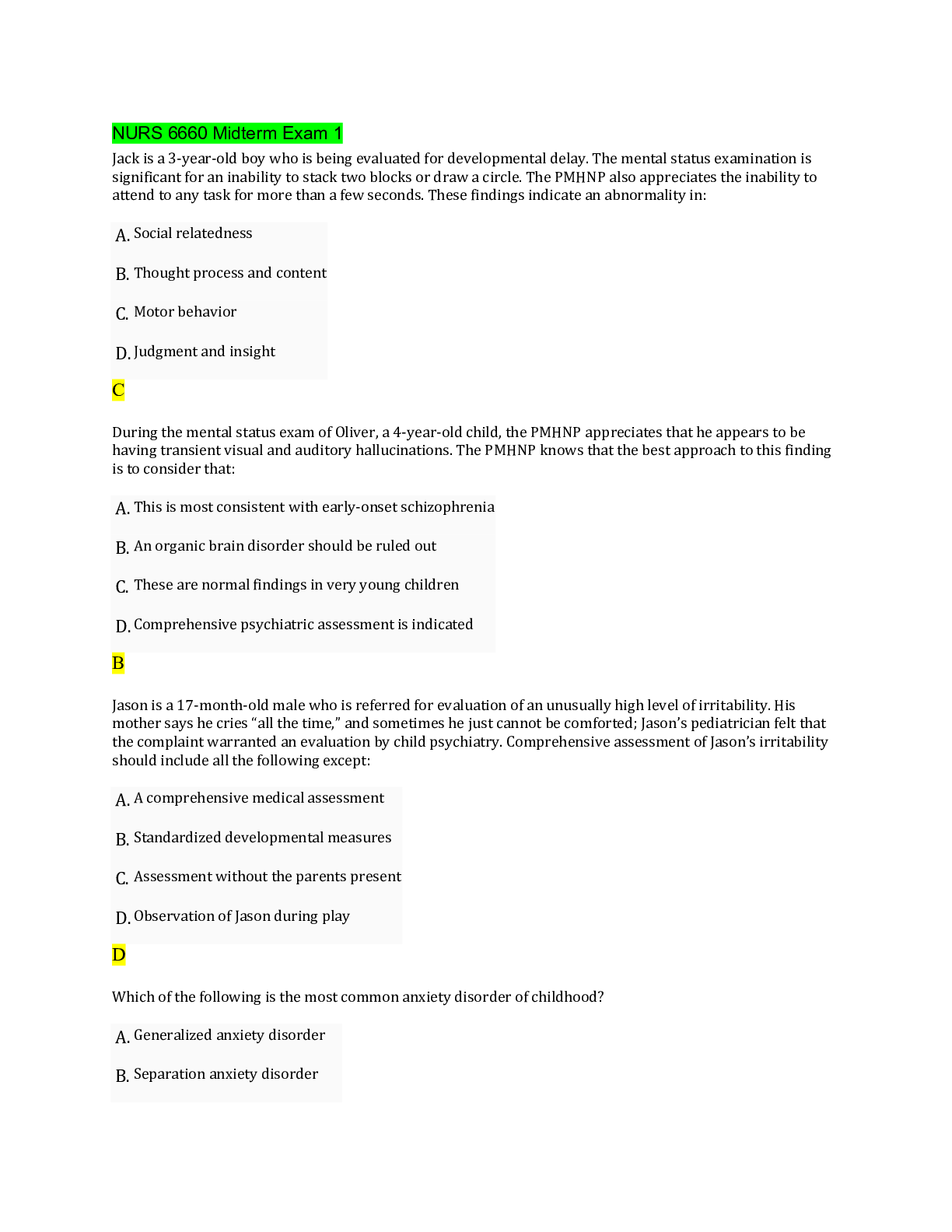
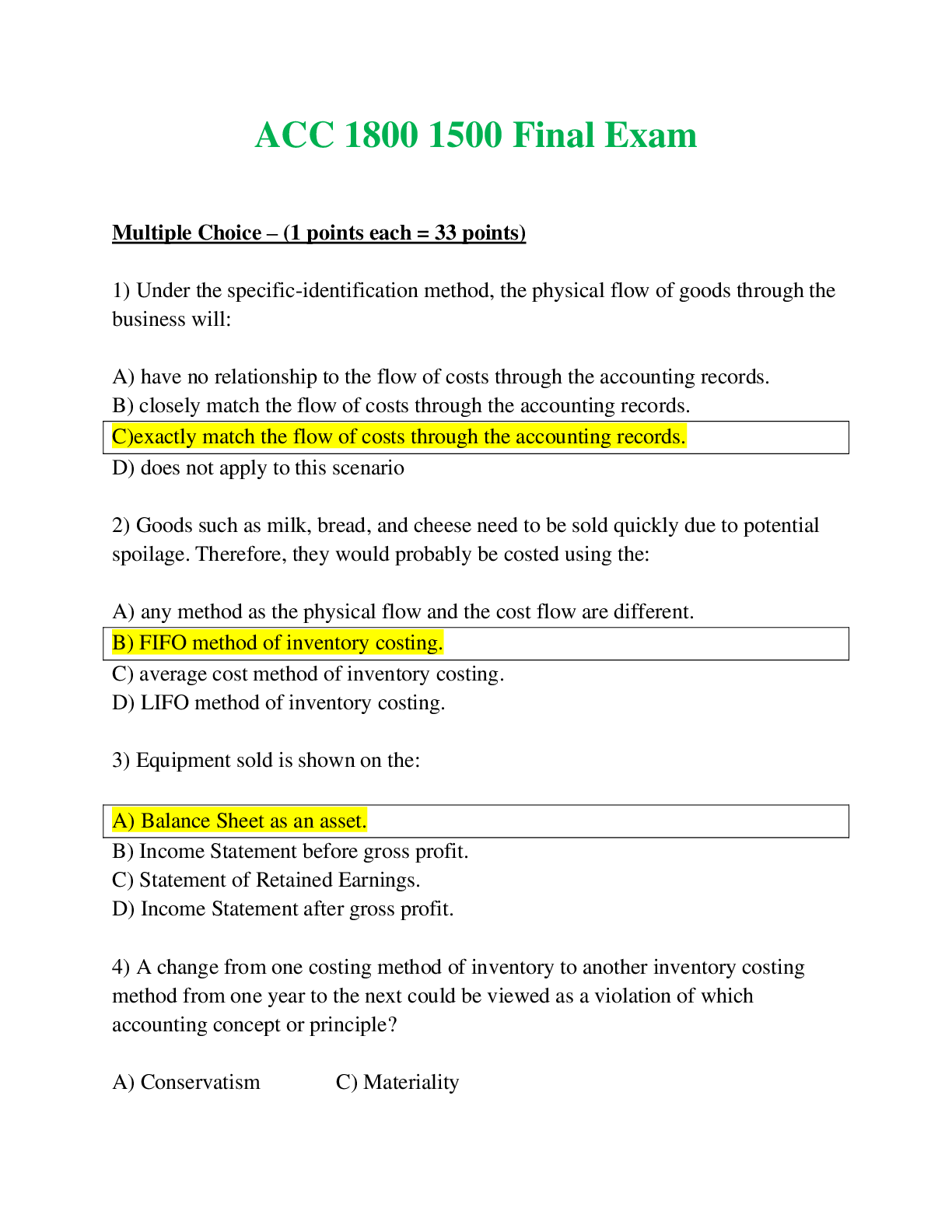

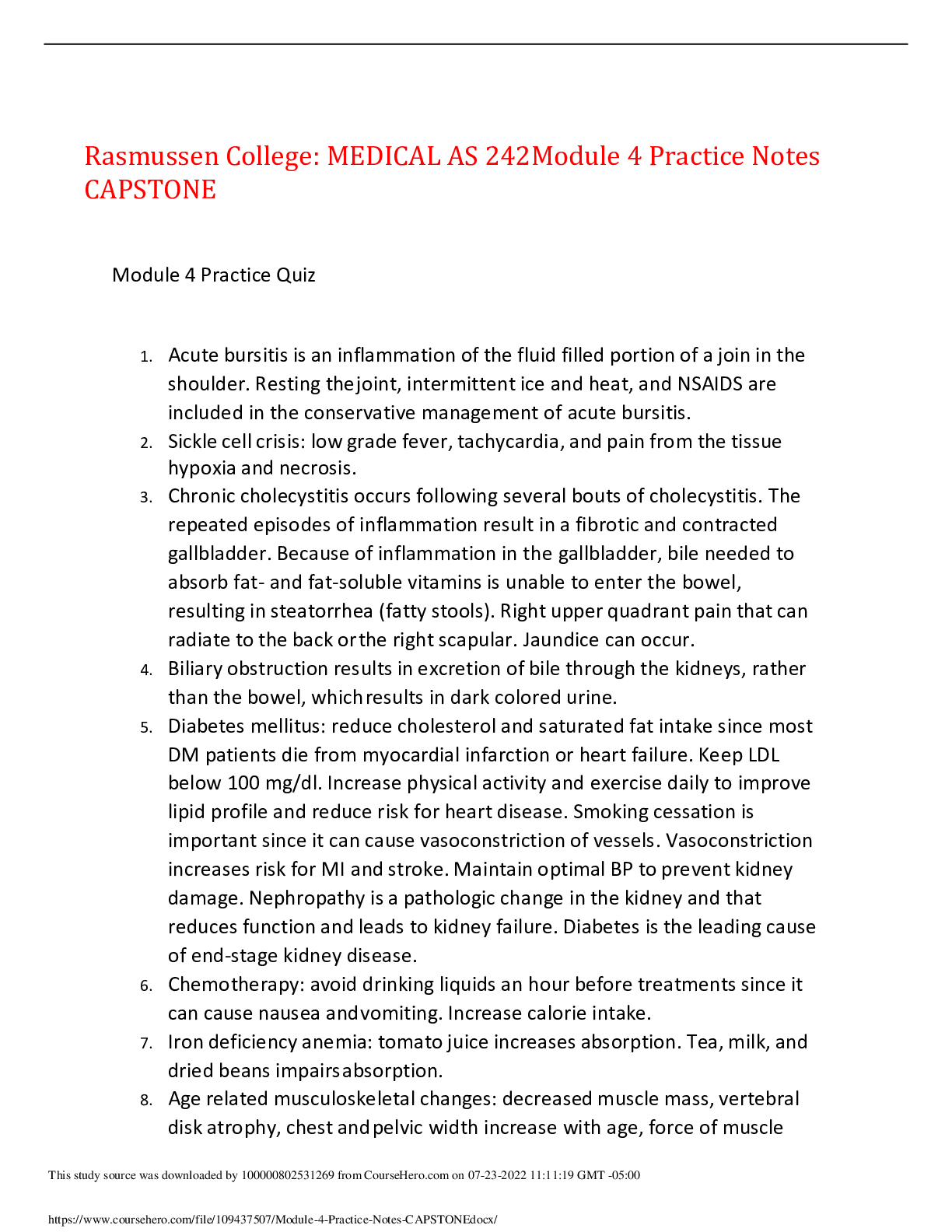
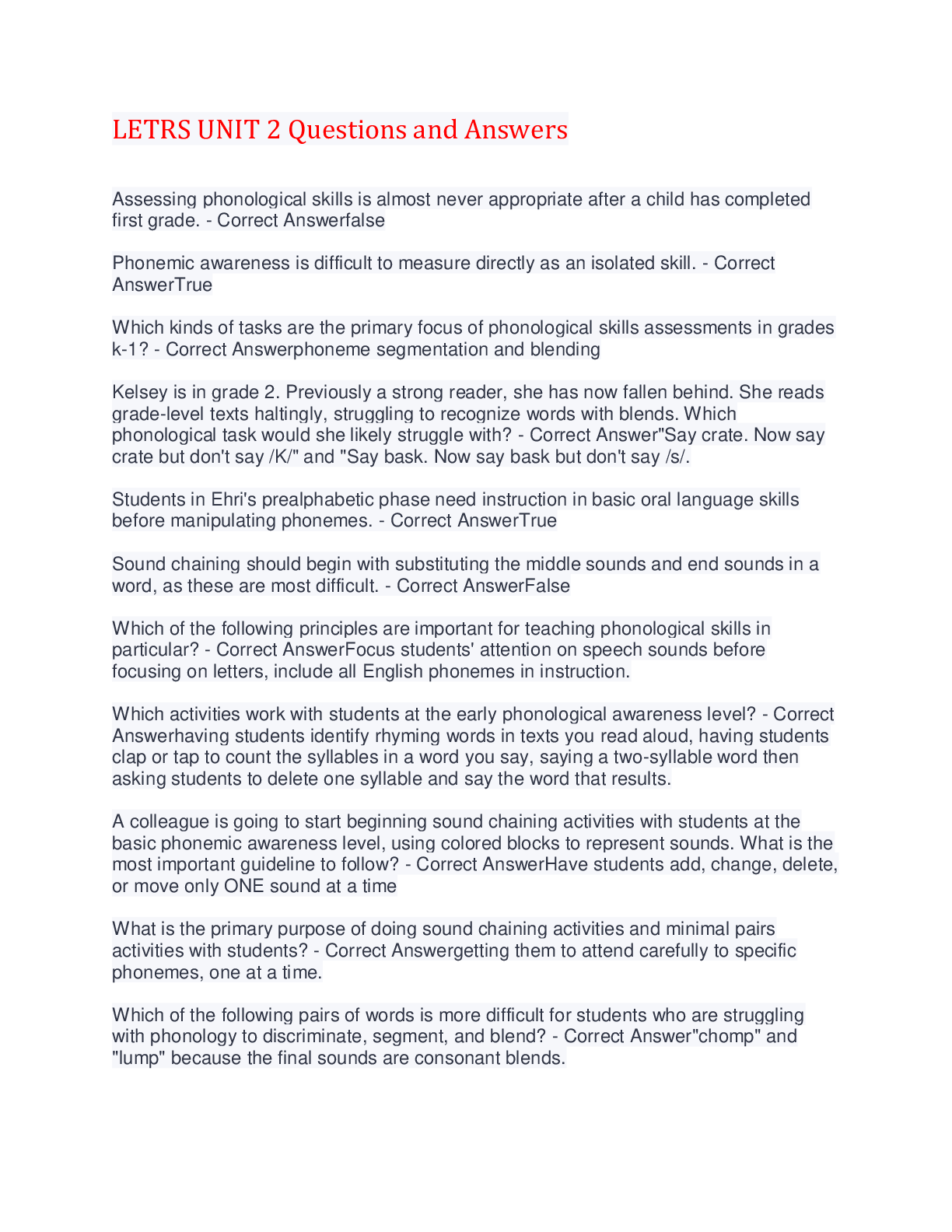
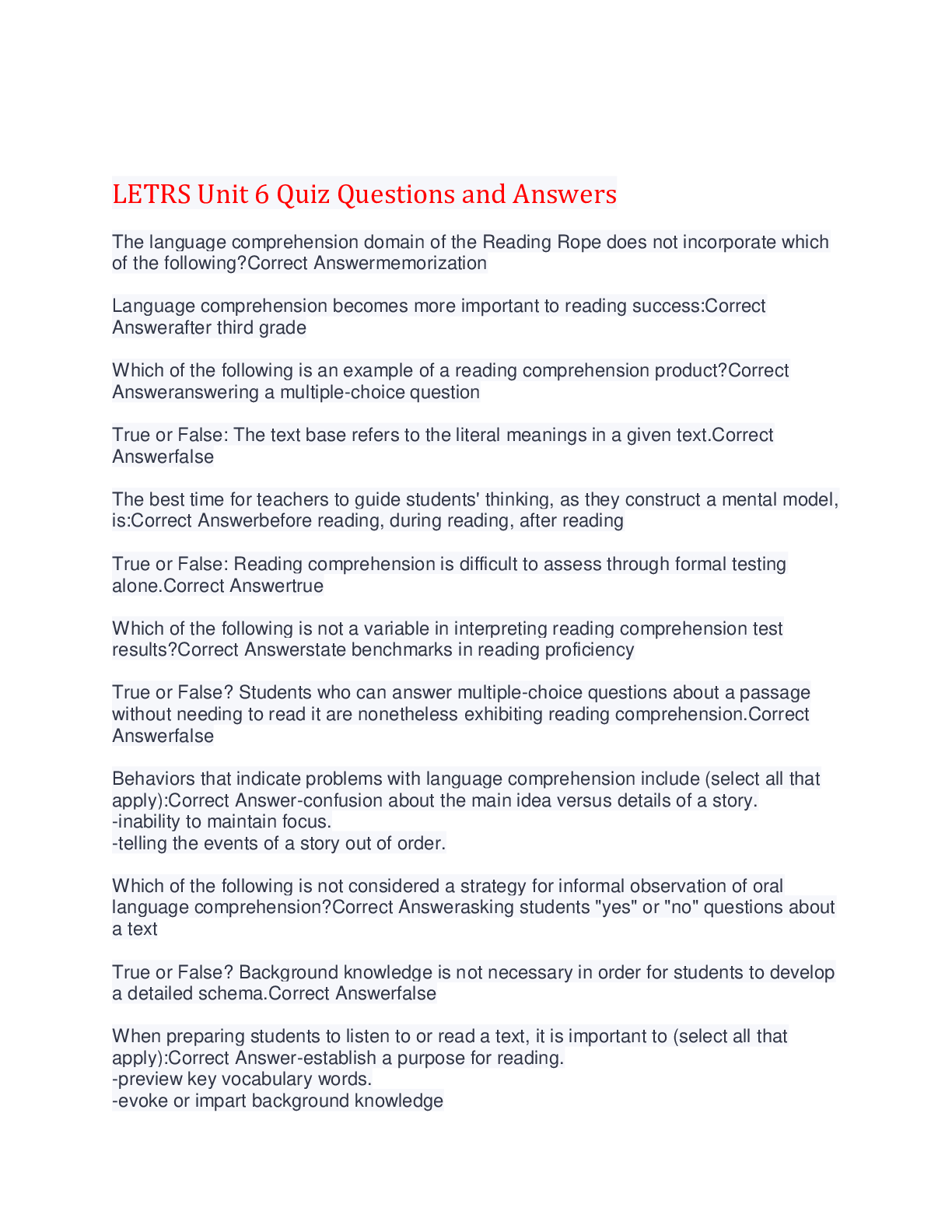
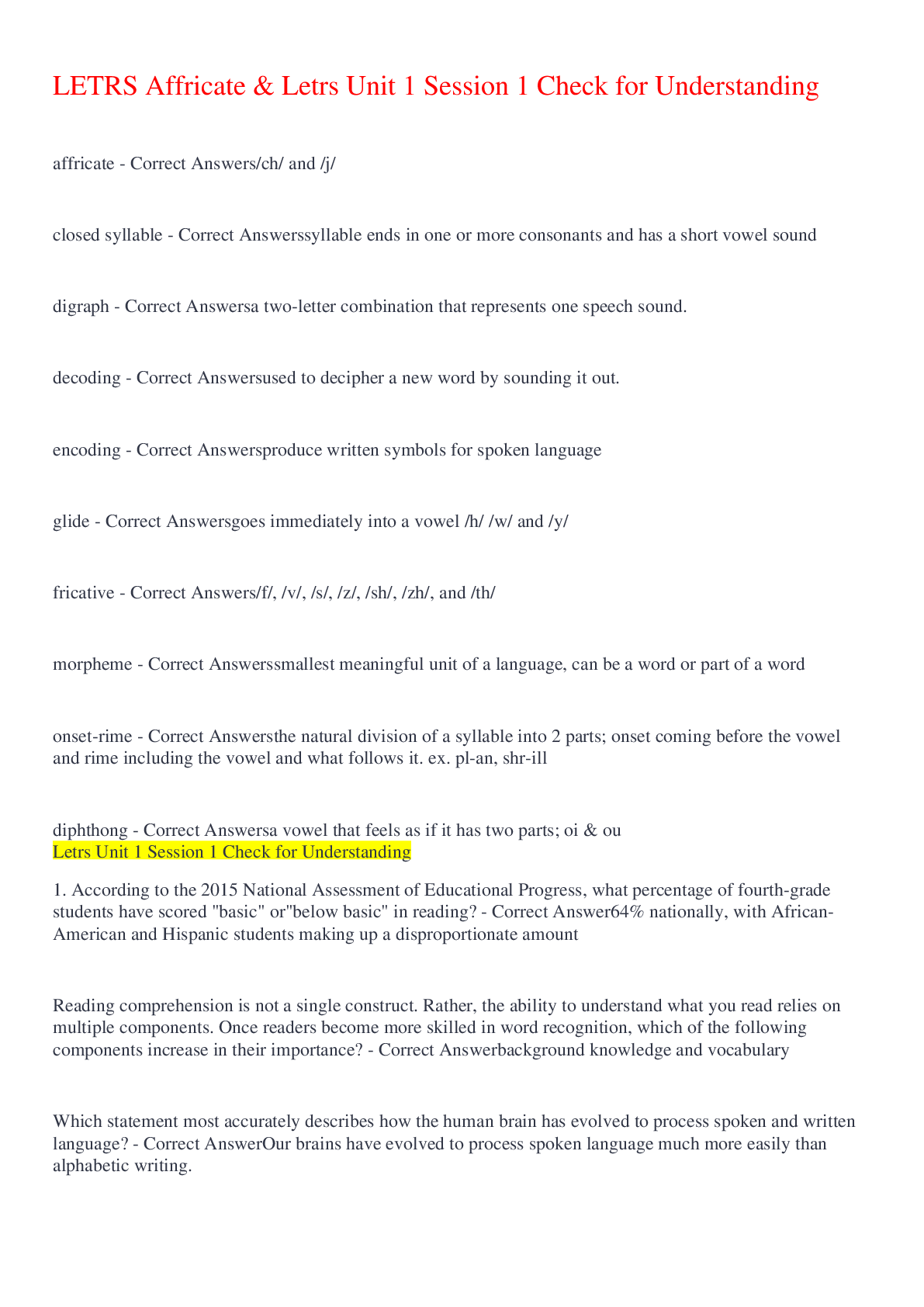

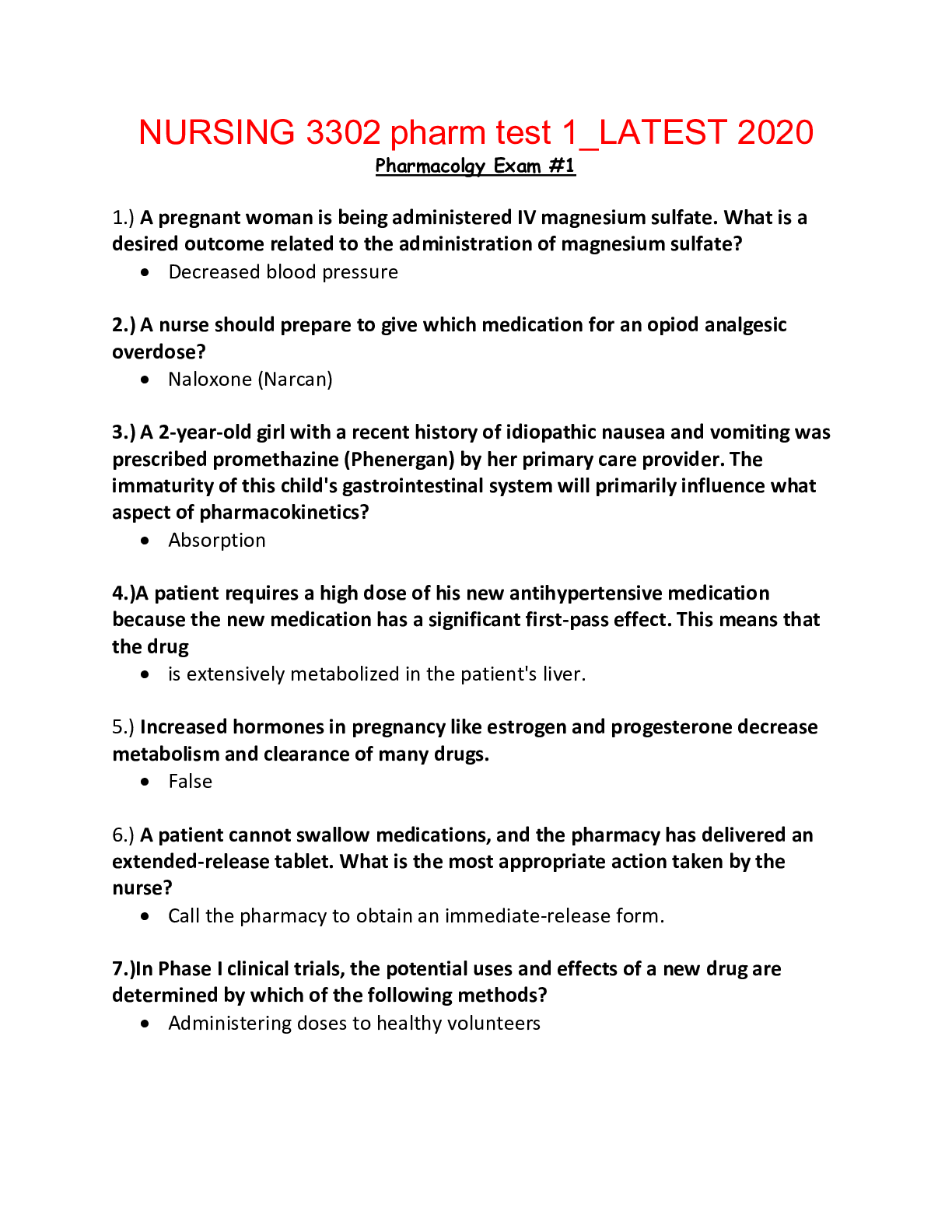
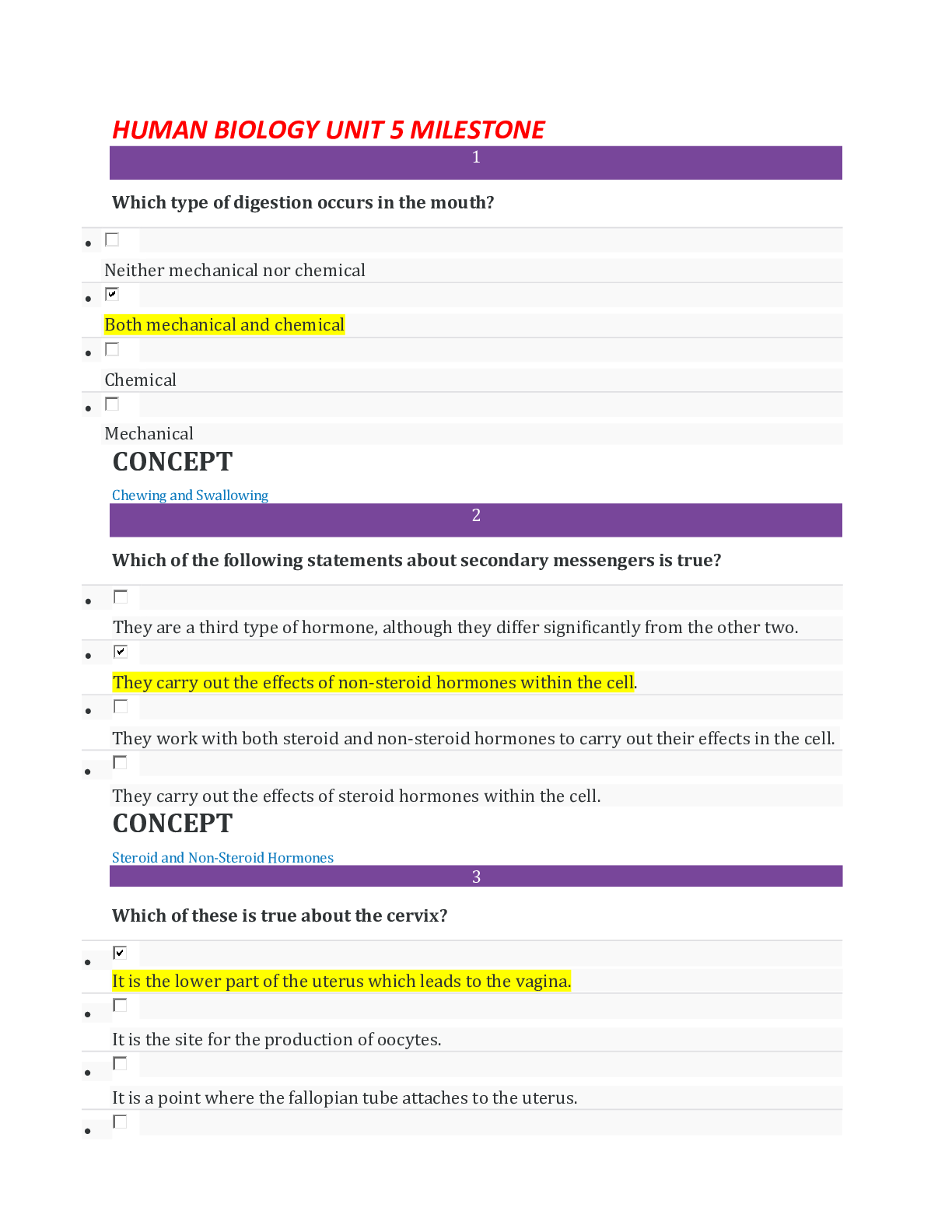
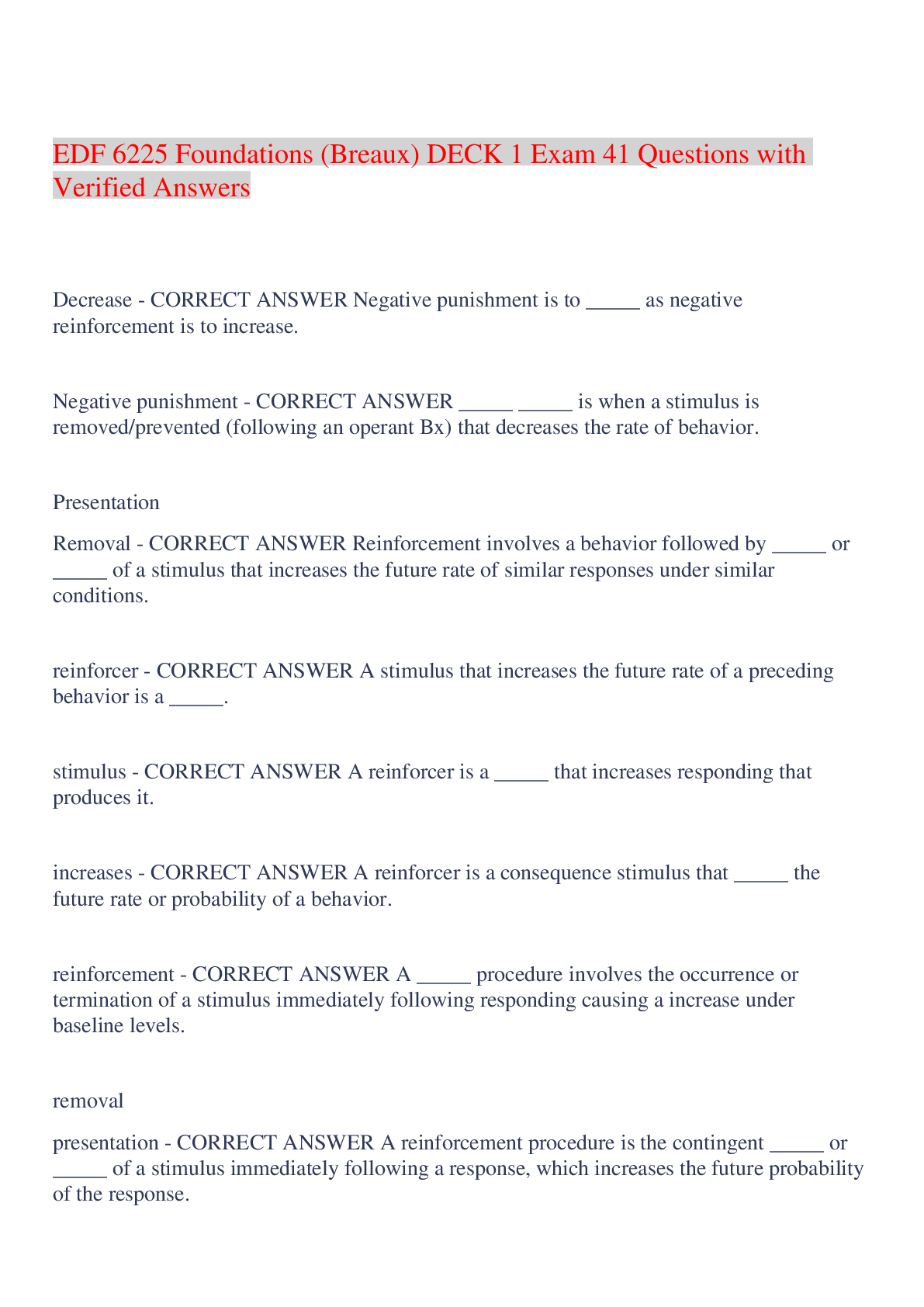
.png)
.png)

